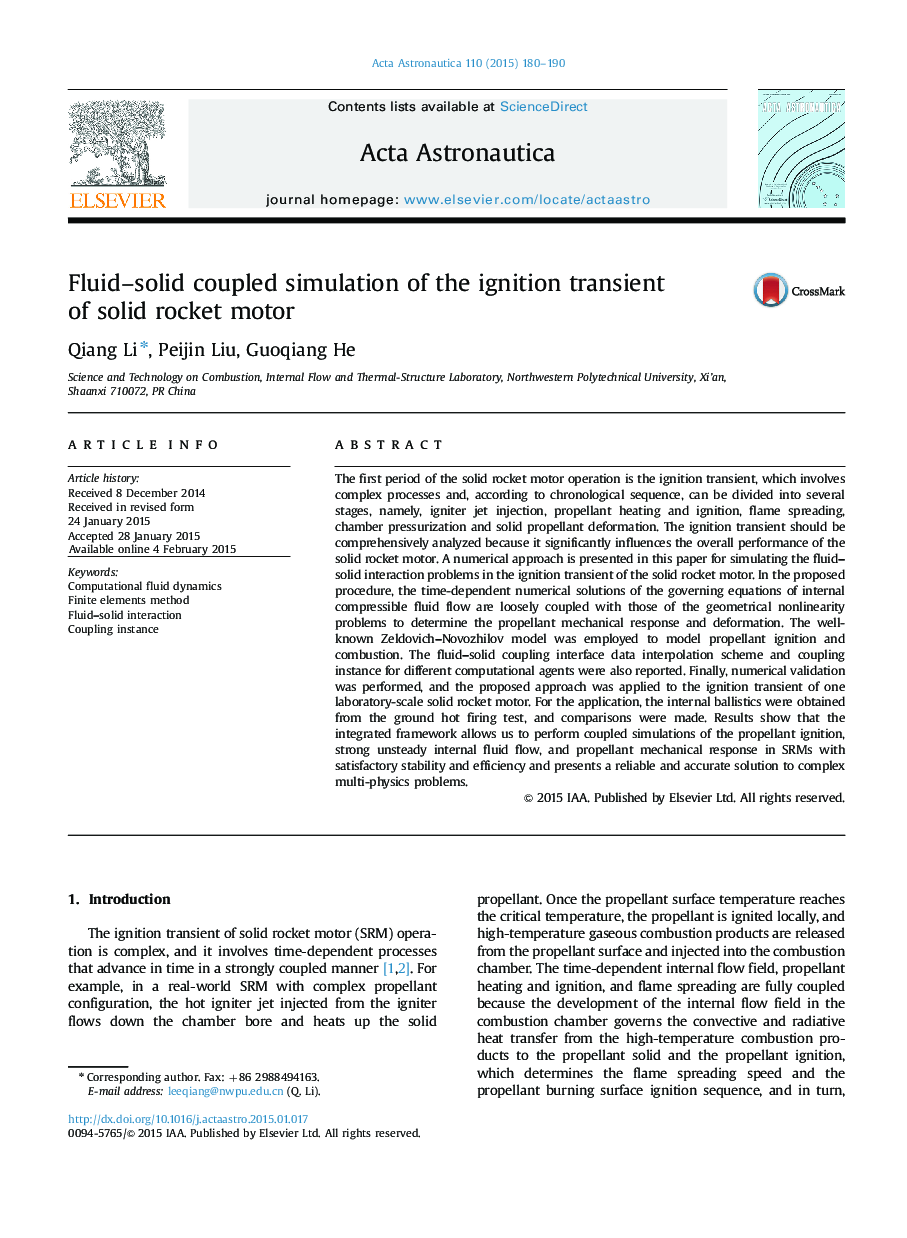| Article ID | Journal | Published Year | Pages | File Type |
|---|---|---|---|---|
| 1714412 | Acta Astronautica | 2015 | 11 Pages |
•We present an integrated framework for fluid–solid coupled simulation of the ignition transient of solid rocket motor.•We presented an simple and accurate interpolation scheme for interpolating data across the fluid–solid coupling interface.•The new integrated framework can be used for simulation of multi-physics problems.
The first period of the solid rocket motor operation is the ignition transient, which involves complex processes and, according to chronological sequence, can be divided into several stages, namely, igniter jet injection, propellant heating and ignition, flame spreading, chamber pressurization and solid propellant deformation. The ignition transient should be comprehensively analyzed because it significantly influences the overall performance of the solid rocket motor. A numerical approach is presented in this paper for simulating the fluid–solid interaction problems in the ignition transient of the solid rocket motor. In the proposed procedure, the time-dependent numerical solutions of the governing equations of internal compressible fluid flow are loosely coupled with those of the geometrical nonlinearity problems to determine the propellant mechanical response and deformation. The well-known Zeldovich–Novozhilov model was employed to model propellant ignition and combustion. The fluid–solid coupling interface data interpolation scheme and coupling instance for different computational agents were also reported. Finally, numerical validation was performed, and the proposed approach was applied to the ignition transient of one laboratory-scale solid rocket motor. For the application, the internal ballistics were obtained from the ground hot firing test, and comparisons were made. Results show that the integrated framework allows us to perform coupled simulations of the propellant ignition, strong unsteady internal fluid flow, and propellant mechanical response in SRMs with satisfactory stability and efficiency and presents a reliable and accurate solution to complex multi-physics problems.
